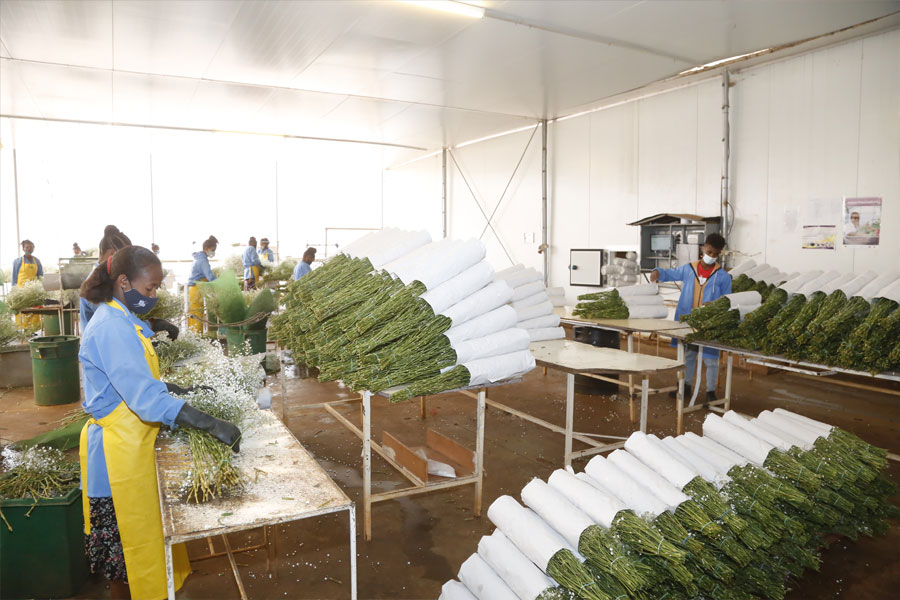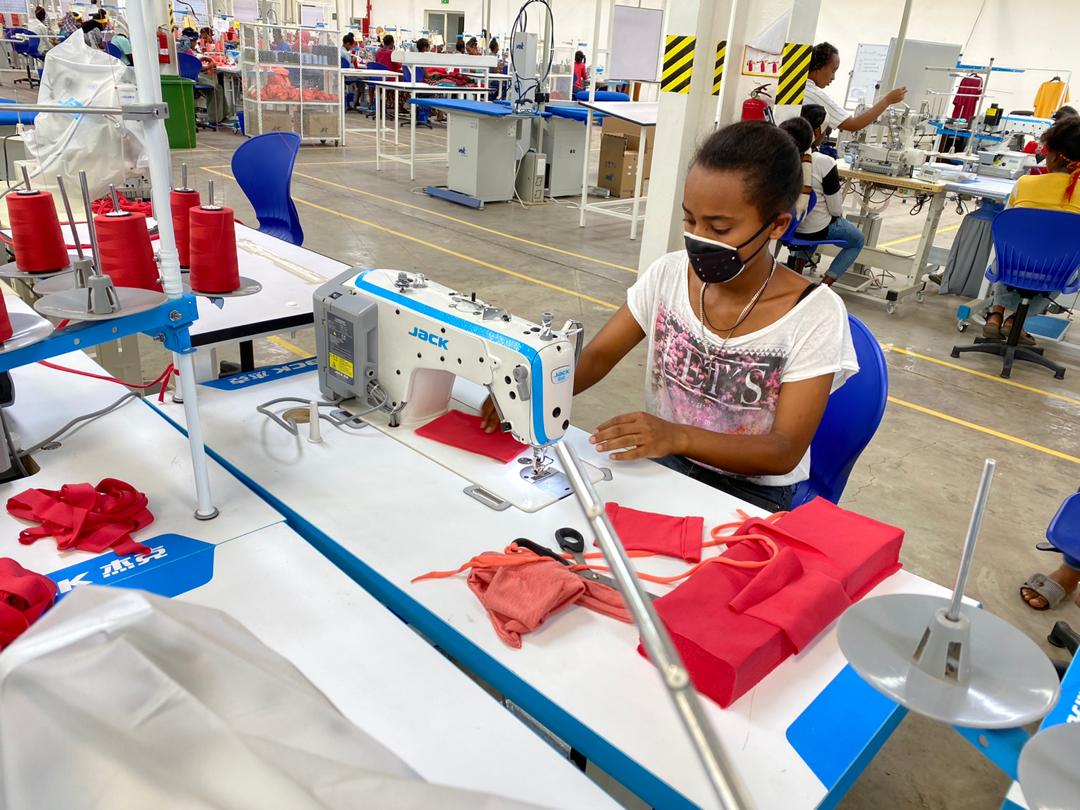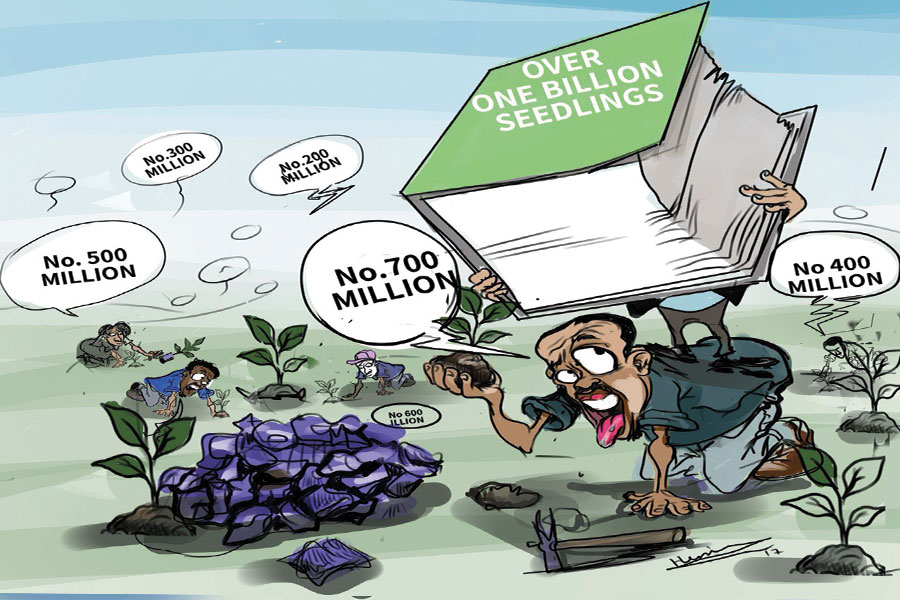
Commentaries | Jun 13,2020
May 10 , 2025
By Amrit Amirapu , Arvind Subramanian
With the spectre of deglobalisation looming large, developing economies are scrambling to devise new growth strategies. The most effective path to development in recent history – specialising in export-oriented, unskilled labour-intensive manufacturing – now appears to be blocked. The model that once propelled the economies of South Korea, Taiwan, Singapore, China, and Vietnam is becoming less accessible for countries in South Asia and sub-Saharan Africa.
What made the traditional development model so successful was its reliance on exports, which enabled countries like South Korea to tap into virtually unlimited global demand, freeing them from the constraints implied by narrow domestic markets. Exporting also fueled supply-side efficiency, and reliance on unskilled labour meant that the benefits of growth were widely shared.
Another key strength of the manufacturing-led growth model was that it ensured productivity gains were aligned with available labour resources, largely owing to the learning-by-doing dynamic that enabled countries to boost efficiency within existing sectors while gradually moving up the value chain. Economies could start with low-productivity exports and, as the workforce became more educated, shift to more skill-intensive and sophisticated export sectors.
Consequently, growth was both rapid and inclusive, and thus more sustainable.
But, those days are long gone, or so it seems. As the world braces for an era of protectionism and deglobalisation, two alternative development strategies have come to the fore. The first, proposed by Rohit Lamba and Reghuram G. Rajan suggests that developing countries – India in particular – should focus on skill-intensive exportable services.
While Lamba and Rajan's proposal retains some of the advantages of the old manufacturing-led model – tapping into global demand and promoting efficiency – its biggest drawback is that only a minuscule fraction of the workforce can directly benefit from it. Even India, the poster child for this strategy among developing countries, employed less than 2.5pc of its workforce in the sectors that could be considered skill-intensive and tradable in 2024.
For most poor countries, where skilled labour is scarce, such a strategy is simply not viable. And even where it is, pursuing it risks exacerbating inequality rather than promoting economic inclusion.
The second strategy, proposed by Dani Rodrik and Rohan Sandhu, contends that the window for labour-intensive exports has narrowed dramatically, and that emerging technologies like AI and automation will further erode manufacturing's ability to generate new jobs. In response, they advocate focusing on productivity gains in non-tradable services. Since the bulk of economic activity and employment in developing countries is concentrated in these sectors, this approach has the potential to foster more inclusive growth.
The limitations of such a strategy are twofold.
For starters, new technologies are just as likely to displace workers in non-tradable service sectors as they are in manufacturing. As we have shown in previous research, non-tradable services are not uniformly low-skilled. Some sectors, such as telecommunications, finance, and real estate, are highly skilled and productive. By contrast, sectors like retail trade and caregiving are more accessible to unskilled workers but tend to have limited potential for productivity growth.
This dynamic, famously captured by Baumol effect, means that non-tradable services are unlikely to become engines of sustained, inclusive economic growth in the way that manufacturing once did. To be sure, there may be some exceptions: construction and tourism, for example, are labour-intensive sectors that could become more productive. But these gains typically depend on adopting new technologies that are inherently labour-displacing, thereby limiting their capacity to drive inclusive development.
Where does this leave developing countries?
Surprisingly, while the traditional manufacturing-led strategy is not as effective as it once was, it remains a viable path for today's poor countries, provided that middle-income countries vacate the export space they currently dominate.
Simple arithmetic helps illustrate this point.
For example, Brazil, China, South Korea, Taiwan, and Mexico account for about two-thirds of low and mid-skilled manufacturing exports, which amounted to about 5.3 trillion dollars in 2023. Over the coming decade, rising wages and geopolitical shifts – especially growing anti-China sentiment – will likely push these countries to move up the value chain or reduce their reliance on exports altogether.
Such a shift could open up space for low-income countries to step in. If they were able to capture even half of the vacated export markets, along with a share of China's growing domestic demand, which we estimate to be at least half a trillion dollars, they could more than double their current exports to 2-2.5 trillion dollars.
And if low-income countries can do this, it could create 50 million to 60 million jobs in their economies, even if the employment potential of export-led manufacturing is only half of what it once was due to labour-displacing technological change. For perspective, China's manufacturing workforce of roughly 150 million helped lift the living standards of the country's 1.4 billion people. Similarly, expanded export opportunities could improve the fortunes of up to half a billion people in today's poorest countries.
Admittedly, the path has become more challenging, particularly for countries that rely heavily on the United States as a trading partner. But that does not make the manufacturing-led growth model obsolete. Instead, it underscores the need for strategic adaptation. Poor countries should diversify their trade relationships and engage more with middle-income economies to nudge them to vacate the export markets that low-income economies could enter.
Deglobalisation and technological change have accelerated the search for viable alternatives to export-led development. However, a sober assessment reveals a difficult trade-off: high-skilled exportable services may offer dynamism or durability but not broad inclusion, while non-tradable services offer inclusion but limited dynamism. Even if the growth miracles of China, South Korea, and Taiwan can no longer be fully replicated, the traditional strategy of focusing on unskilled, labour-intensive manufacturing exports remains a promising path, and may still offer the best chance of achieving shared prosperity in the world's poorest regions.
PUBLISHED ON
May 10,2025 [ VOL
26 , NO
1306]

Commentaries | Jun 13,2020

Commentaries | Apr 13, 2025

Verbatim | May 03,2024

Radar | Dec 05,2018

Fortune News | Sep 09,2023

Radar | Jul 24,2021

Radar | Jan 07,2022

Fortune News | Apr 12,2020

Radar | Nov 27,2021

Radar | Apr 26,2019

My Opinion | 133734 Views | Aug 14,2021

Photo Gallery | 133610 Views | May 06,2019

My Opinion | 130273 Views | Aug 21,2021

My Opinion | 128052 Views | Sep 10,2021

Dec 22 , 2024 . By TIZITA SHEWAFERAW
Charged with transforming colossal state-owned enterprises into modern and competitiv...

Aug 18 , 2024 . By AKSAH ITALO
Although predictable Yonas Zerihun's job in the ride-hailing service is not immune to...

Jul 28 , 2024 . By TIZITA SHEWAFERAW
Unhabitual, perhaps too many, Samuel Gebreyohannes, 38, used to occasionally enjoy a couple of beers at breakfast. However, he recently swit...

Jul 13 , 2024 . By AKSAH ITALO
Investors who rely on tractors, trucks, and field vehicles for commuting, transporting commodities, and f...

Aug 23 , 2025
Banks have a new obsession. After decades chasing deposits and, more recently, digita...

Aug 16 , 2025
A decade ago, a case in the United States (US) jolted Wall Street. An ambulance opera...

Aug 9 , 2025
In the 14th Century, the Egyptian scholar Ibn Khaldun drew a neat curve in the sand....

Aug 2 , 2025
At daybreak on Thursday last week, July 31, 2025, hundreds of thousands of Ethiop...
Aug 23 , 2025 . By BEZAWIT HULUAGER
The fuel industry is facing its biggest shakeup in decades as federal regulators roll...

Aug 23 , 2025 . By BEZAWIT HULUAGER
Two domestic companies, IE Networks and Liyana Healthcare, have emerged as the first...

Aug 23 , 2025 . By NAHOM AYELE
A new directive authorises state-run hospitals and clinics to outsource not only non...

Aug 23 , 2025 . By BEZAWIT HULUAGER
The federal government has turned its attention to an unlikely export sector: healthc...